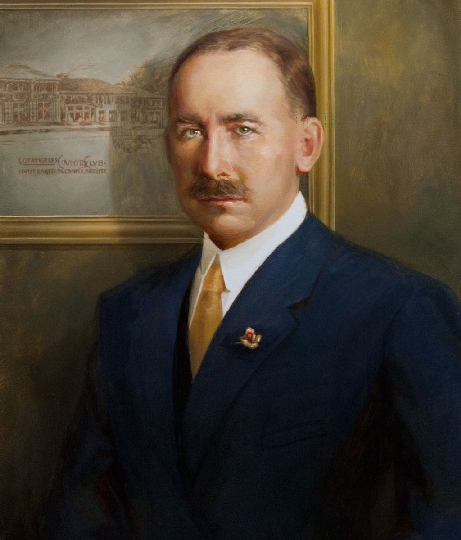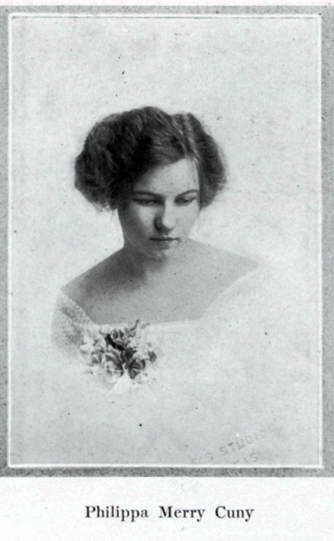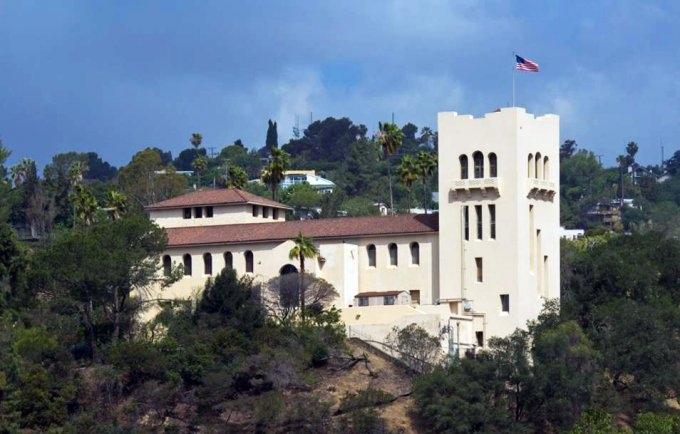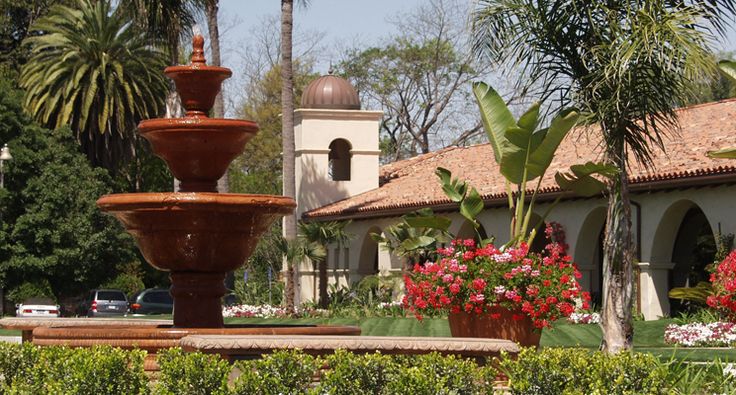
In this chapter we got a first-hand view of Ernest Freese through the lens of Paul Peter Kiessig, who knew him for almost fifty years. And through Kiessig's letter to Winifred Freese, we get a view of Kiessig himself. But what more can we learn of him? And of the times during which they knew each other?
Kiessig was born in 1887 in San Diego, CA. In 1909 Kiessig was working in Sacramento for the California State Architect George C. Sellon and his associate Edward C. Hemmings, when he first met Ernest. At the time, Kiessig was just an office boy, while Freese had returned from some of his travels and was welcomed warmly back to the firm. Ernest was gone again before too long, and Kiessig himself left in 1912 to enroll at the University of Illinois at Urbana, where he was a student in the Agriculture department.
After earning a B.S. in agriculture with a specialty in drafting in 1916, Kiessig went to work at an airplane experimental station, McCooks Field, in Dayton, Ohio. He then served as an aviator in the War. From 1921 to 1923 Kiessig worked for the National Park Service as an assistant landscape architect to Daniel Hull, whom he had known from his days at the University of Illinois. Besides his primary posting at Yosemite, Kiessig traveled extensively that summer to report on conditions at other parks. By 1922, Hull and Kiessig had begun ``tentative general plans'' for Yellowstone, Yosemite, Sequoia, Grand Canyon, and Mesa Verde. Kiessig assisted Hull in designing numerous buildings at the Grand Canyon site.
On page 14, Paul Peter Kiessig used a quote from Sir Walter Scott to describe Ernest's humiliation of Silas Burns when Burns had ventured into the drafting room one day. He quoted the first two lines of Scott's 1815 poem "Lord of the Isles", Canto 5, Stanza 18:Oh, Many the shaft at random sent,The first two lines may well have stood as shorthand for a reference to the whole stanza.
Finds mark the archer little meant!
And many a word at random spoken,
May soothe or wound a heart that's broken!
Here we see artist Kate Sammons' color portrait of Sumner Hunt, Freese's boss at the Los Angeles architectural firm of Hunt and Burns. Hunt confined himself largely to the business end of the enterprise.

Paul Peter Kiessig mentioned Ernest's first wife Philippa in his letter to Ernest's second wife Winifred. Philippa was born to Lowndes Ada Cuny and Lillian Merry Wiley in Kenney, Austin, Texas in 1893, and passed away in 1989 in California. Here is a photo of Philippa Merry Cuny, taken from the 1913 Baylor College yearbook Round-up, for which she was one of three artists. Philippa was a descendant of Gov. William Bradford (1590-1657), who came over to America on the Mayflower in 1620. Bradford was the second signer of the Mayflower Compact, and was elected Governor of the Plymouth Colony for 31 years. On page 25 I mention the rather quick addition of the three children of Ernest and Philippa and the later unraveling of the marriage. Note that Ernest and Philippa gave their third child Dixie the middle name of Bradford.

Kiessig did not have much good to say about Philippa. (See page 15.) Yet Ernest enjoyed his early adventures with the young woman whom he had chosen as his first wife. On page 22 you can read about their trip to Hawaii and their explorations there on a motorcycle. You can also get a feeling for their early love from Ernest's delightful description of their experience renting a bungalow, in his short article "A Bungle-ode," published in The Architect and Engineer of California.
Also, following Ernest's "bungle-ode" on the above-referenced webpage is a rejoinder published by the Los Angeles/Pasadena architect Arthur S. Heineman the following month in the same periodical. Interestingly, Heineman's biography paints the picture of a California architect other than Ernest Freese who established himself without formal architectural training.
On page 21, we encountered Harry A. Franck, who worked and tramped eastward around the world. I had asked "How common were such working trips at that time?" On November 6, 2019, the New York Times published an article by Bruce Weber, entitled "Annie Londonderry, Who Traveled the World by Bicycle". (The article is part of "Overlooked", a series of obituaries about remarkable people whose deaths, beginning in 1851, went unreported in the Times.) Excerpting from that article:"Annie Cohen Kopchovsky, a Latvian immigrant who in June 1894, at about age 23, cycled away from her Boston home, leaving a husband and three small children, for a journey around the world.""Keeping her husband and family a secret for most of her journey, she called herself Annie Londonderry and agreed, in exchange for $100, to attach an advertisement for the Londonderry Lithia Spring Water Company of New Hampshire. Her bicycle and her person became a rolling billboard, the first of many moneymaking schemes she would come up with to finance her travels.""Her audacious trip was completed in September 1895, her return to Boston reported on in the New York Times in straightforward fashion.""Kopchovsky died of a stroke on November 11, 1947. Her husband had died the previous year."
A more complete description of her adventures was presented in the 2007 book, Around the World on Two Wheels: Annie Londonderry's Extraordinary Ride, by Peter Zheutlin, a journalist and cycling enthusiast.
On page 22, we read the architect Harris Allen's complimentary remarks about Ernest Freese's brilliant drawings which contributed to the successful completion of both the Southwest Museum and the Virginia Country Club in Long Beach. First we see a photograph of the Southwest Museum.Next we see a clearly more recent photo of the Virginia Country Club. (Note that the cars in the parking lot are certainly of a more recent vintage than the 1920's!)


Next is a history of the Virginia Country Club with photos from an earlier period:

In an attempt to understand Ernest Freese's motivations for travel, I had cited two opinion pieces that Jon Grinspan, an historian at the Smithsonian Institution, published in the New York Times. More recently, I have come across another article in the New York Times, "Cleaving to the Medieval, Journeymen Ply Their Trades in Europe," by Melissa Eddy, August 7, 2017, which may provide further insight. Ms. Eddy described a centuries-old tradition, whereby "Wandergesellen", or journeymen, traveled around to gain experience once they had finished their training in trades such as bricklaying, baking, carpentry, stone-masonry and roofing. It appears that the tradition was quite formalized in Europe (primarily in German-speaking countries), and I wondered if Freese might have been motivated by some awareness of this tradition to undertake similar travels. Freese's experience did seem to mirror at least some of the aspects of the German tradition, even though perhaps more informally. There are at least several instances where he would stop in cities and towns and hold temporary jobs in architectural drafting, and he maintained at least an informal journal of his travels, which he termed "The Road". I believe that Freese was of German ancestry, and his father and uncles who left Maine for Minneapolis during the period after the Civil War were all coopers (i.e. barrel-makers), which was a trade that had had an apprentice/journeyman tradition. I don't know whether Freese's father and uncles had trained in the traditional system to become coopers. I also don't know whether such a tradition would have applied to architects, but remember that Freese started off as a draftsman in architectural firms and then mastered construction engineering and related arts.
I asked Jon if he knew of any comparable experiences in the US from 100 years ago. And further, did he think that the DIY educational experiences that he described might have meshed with the journeyman experience, at least in some cases?His answer: "In regards to your question: yes. I read that article too, and couldn't help thinking about "wander years," in which young men would take off to travel America, working odd jobs. It was a tradition in the British Isles, as well as Germany, but reached its peak in the 19th century US, because there was greater mobility, and a huge demand for labor. Most young men worked as farmhands and laborers, but some took jobs teaching for a year or two at schools in small communities. Many of those people settled down later in life, joining trades or farming. Later, from the 1870s on, "tramps" emerge, who have their own mobile lifestyle, and they have been well studied."
Thanks, Jon!
On page 22 of Chapter 2, I gave as an explanation for Freese's audacious approach to his life, based on the two op-ed columns written by Jon Grinspan for the New York Times. Jon, who earned a Ph.D. in History at the University of Virginia in 2013, has been a Curator in the Division of Political and Military History at the National Museum of American History (in the Smithsonian Institution). Here you can read a fascinating description of Dr. Grinspan's research specialities.
The Hathi Trust has made a copy of Freese's book, Perspective Projection: A Simple and Exact Method of Making Perspective Drawings, available online at Perspective Projection. Enjoy!
As I mentioned in this chapter, Ernest Freese published a surprising number of articles and columns. I didn't want to overwhelm the readers of my book with a laundry list of these publications. But once the book was published, I thought that no one could really complain if I made the list available on the webpages for the book. To view the list, click on this link. Enjoy!!
After two thirds of a century, Freese's 1934 article in the American Architect, "Geometry of the human figure", came in for favorable mention in Lance Hosey's article, "Hidden lines: gender, race, and the body in graphic standards," in the Journal of Architectural Education, pp. 101--112, November 2001. Freese's table from his 1934 article, entitled "Dimensions of the Human Figure", first appeared in the third edition (1941) of Architectural Graphic Standards. As Hosey reported, the table was included more or less unchanged in later editions, for forty years. I list Freese's 1934 article on page 7 of my list of Freese's articles.
On pages 25-26, I discussed the fact that Freese and his second family were practicing nudists, and that they patronized Fraternity Elysia (Glassey's Ranch). I have more recently identified several articles on the web that confirm what I had written: First is an entry from June 19, 2011 on
The blog by "Vadim aka t-maker" states that on Sept. 2, 1946: "Police arrested more than two dozen men and women in a raid on the Fraternity Elysia nudist camp in La Tuna Canyon. In 1936, Charles, Charles and Lillian Richter moved into a small, elegant modernist house in Pasadena. It had windows up to ceiling height, which may have given their neighbors some unexpected views. For the Richters had become ardent nudists. A year earlier, in 1935, they had joined the Fraternity Elysia, located in the Los Angeles Hills on a 250-acre estate near Lake Elsinore and run by Hobart and Lura Glassey and their business partner Pete McConville. Charles Richter (1900-1985), was an American seismologist and physicist."
Sharp-eyed readers will note that Dudeney's dissection (Figure 2.9), which I showed is hingeable (Figure 2.10), has six pieces, whereas Lindgren's unhingeable dissection, which Freese reproduced in Plate 19, uses one fewer piece. Now the hinging of Dudeney's dissection is certainly a point of endearing artistry, but we need not completely turn up our noses at that dissection at the top of Plate 19. If you are really sharp, you may have realized that all but one piece in that 5-piece dissection can be hinged together, so that it is "partially hingeable", and actually really close to being fully hingeable. Furthermore, the four pieces that can be hinged together can be hinged together in four different ways! Do you see how?
Freese's second wife Winifred was born about 1914. Thus she was about 22 years old when Freese's first wife Philippa and their children moved out in 1936. That would make Winifred about 23 when she and Ernest wed.
Winifred graduated from Scripps College with a BA in 1934, just 8 years after its founding. Radcliffe College, at which she earned an MA in 1935, had been founded as the ``Harvard Annex'' in 1879 and was officially merged with Harvard University in 1999.
Copyright 2020, Greg N. Frederickson.
Permission is granted to any purchaser of
Ernest Irving Freese's Geometric Transformations:
the Man, the Manuscript, the Magnificent Dissections!
to print out a copy
of this page for his or her own personal use.
Last updated May 22, 2020.